Table of Contents
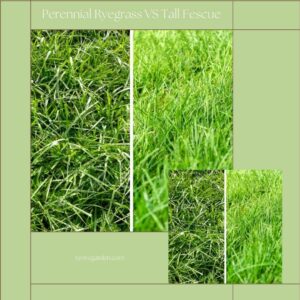
Selecting the ideal grass variety for your dream lawn is essential. This blog post explores two top contenders: Perennial Ryegrass and Tall Fescue. Discover their unique characteristics, growth patterns, and environmental preferences, helping you make an informed choice. Get ready to create a lush, envy-worthy yard that elevates the beauty of your home and provides a relaxing outdoor sanctuary. Let’s dive in and uncover the magic these remarkable grasses have in store for you!
When it’s time to cut your grass, you have to be aware of the well time to cut grass time.
What Is Perennial Ryegrass?
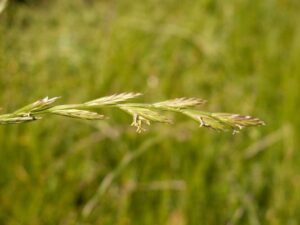
Perennial Ryegrass (Lolium perenne) is a cool-season grass that thrives in temperate regions with mild summers and winters. It is widely popular for its fine texture, bright green color, and rapid germination, making it a top choice for establishing new lawns or overseeding existing ones.
Characteristics and Appearance
Perennial Ryegrass forms a dense, lush turf with slender, fine-textured leaves that create a velvety look and soft feel underfoot. Its vibrant green hue adds an instant aesthetic appeal to any landscape. The grass can reach a height of 1 to 2 feet when left uncut and produces numerous tillers, giving it a thick, carpet-like appearance.
Climate and Environmental Requirements
This grass variety performs best in regions with cool, temperate climates, such as the northern United States and parts of Europe. It prefers temperatures between 60°F to 75°F (15°C to 24°C) and can tolerate light frosts. Perennial Ryegrass thrives in well-draining soils with good moisture retention but may struggle in hot, arid conditions.
Growth and Establishment
One of the significant advantages of Perennial Ryegrass is its rapid germination and establishment rate. It quickly fills in bare spots and establishes a dense turf quickly, making it an excellent option for overseeding lawns damaged by winter or wear.
Strengths of Perennial Ryegrass
Perennial Ryegrass’s quick growth and establishment make it an attractive choice for those seeking rapid results. It’s fine texture and vibrant green color create an aesthetically pleasing lawn that adds value to any property. Additionally, it tolerates regular mowing well and can recover from moderate traffic.
Explore our comprehensive Grass Seed Germination Temperature Chart to understand the ideal conditions for both Perennial Ryegrass and Tall Fescue.
Potential Drawbacks of Perennial Ryegrass
While Perennial Ryegrass is a popular choice for its fast growth, it is less drought-tolerant than other grass types. It requires consistent watering and may struggle during prolonged dry spells. In warmer climates, it may act as an annual grass and need yearly reseeding to maintain a healthy lawn. Additionally, it could be better suited for shaded areas, as it prefers full sun exposure.
What Is Tall Fescue Grass?
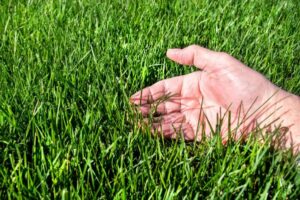
Tall Fescue (Festuca arundinacea) is a cool-season grass widely recognized for its durability and adaptability. It is a popular choice for lawns, sports fields, and high-traffic areas due to its ability to withstand various environmental conditions and heavy use.
Characteristics and Appearance
Tall Fescue grass blades are broader and coarser than Perennial Ryegrass, giving it a distinct and slightly rugged appearance. It forms dense bunches rather than spreading by rhizomes or stolons, contributing to its clump-like growth pattern. The color of Tall Fescue ranges from dark green to a bluish-green hue, depending on the variety.
Climate and Environmental Requirements
Tall Fescue thrives in various climates and tolerates heat and cold well. It is particularly well-suited for transition zones and areas with hot summers, making it a preferred choice in parts of the United States, where temperatures fluctuate between warm and cool throughout the year. It exhibits good heat and drought tolerance and can maintain its green color even during dry spells.
Growth and Establishment
Tall Fescue establishes itself relatively quickly, though less rapidly than Perennial Ryegrass. Its strong root system allows it to compete with weeds effectively and withstand heavy foot traffic, making it an excellent choice for lawns with active families or pets.
Strengths of Tall Fescue
The key strength of Tall Fescue lies in its ability to thrive in challenging conditions. Its durability and resistance to disease and pests make it a low-maintenance option for homeowners. Its deep root system allows it to access water deeper in the soil, contributing to its drought tolerance. Additionally, Tall Fescue performs well in sunny and partially shaded areas, making it suitable for lawns with varying degrees of sunlight.
Explore how to overcome the challenge of planting grass seeds on hard dirt with our helpful guide.
Potential Drawbacks of Tall Fescue
Tall Fescue’s coarser texture may need to be more visually appealing to some homeowners seeking a fine-textured lawn. Although it can handle heat and drought, it may require regular watering during extended dry periods. In regions with cold winters, Tall Fescue may experience some browning, but it typically recovers with the return of warmer temperatures.
Differences Between Perennial Ryegrass and Tall Fescue
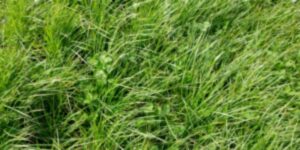
Growth-Rate
The most notable difference between perennial ryegrass and tall fescue is their growth rate and seasonality. Perennial ryegrass grows quickly and reaches full maturity in only four weeks once established, whereas;
Tall fescue takes eight weeks to reach full maturity after establishment. Perennial ryegrass also goes dormant during hot weather, so you may need to water more frequently.
Shade
Perennial ryegrass is more shade tolerant than tall fescue.
Roots
It also tolerates poor soil conditions better than tall fescue because it can grow deeper roots to reach water and nutrients.
Heat Resistant
Perennial ryegrass also has a higher heat tolerance than tall fescue, which can withstand summer temperatures better than tall fescue without becoming stressed or damaged by heat stress.
Soil Type
Both perennial ryegrass and tall fescue perform best in well-drained soils with a pH level between 6 and 7.5. However, perennial ryegrass tolerates more acidity than tall fescue does. If your soil is acidic, use tall fescue instead of perennial ryegrass to avoid problems with compaction or thatch build-up over time.
You may also like to learn how to achieve a lush and thriving lawn by incorporating peat moss over grass seed in our comprehensive guide.
Pests Resistant
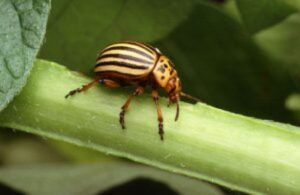
Tall fescue has built-in pest resistance because it contains a natural chemical called trichloroacetic acid (TCA). TCA helps prevent root diseases by killing fungal spores before they grow into plant pathogens that can cause rot or damage your lawn’s root system. Perennial ryegrass doesn’t contain TCA naturally but can be treated with fungicides to help protect against root diseases like Pythium blight.
Durability
Perennial ryegrass can withstand wear and traffic than tall fescue better, but both are considered durable varieties compared with other types of turfgrass. Perennial ryegrass has deep roots that help it survive foot traffic and further damage from heavy machinery.
According to North Carolina State University Extension Service, tall fescue is not as durable as perennial ryegrass but does better than Kentucky bluegrass under traffic or heavy machinery stress.
The only problem with perennial ryegrass is that it requires more fertilization than Tall Fescue Grass.
Mowing
Perennial ryegrass is a type of cool-season grass that can use to oversee existing lawns or establish a new lawn. It requires less mowing than tall fescue and tolerates shade better than most warm-season grasses. Tall fescue is another type of cool-season grass often used for lawns in the southeastern United States.
Both types of grass require less water than warm-season grasses, but they also tend to grow more slowly and may need fertilizer to maintain their vigor over time.
The mowing needs for perennial ryegrass are much lower than those for tall fescue because it grows much more elevated and doesn’t need to be mowed as often.
Perennial ryegrass grows up to 8 inches tall once established, while tall fescue grows only 1 1/2 inches at full maturity. If you’re growing perennial ryegrass from seed, you’ll need to mow it every three weeks until it reaches the full height of about 12 inches tall (whichever comes first).
Similarities Between Perennial Ryegrass and Tall Fescue
- Both perennial ryegrass and tall fescue are well-known turfgrasses that have been used for decades in lawns.
- Both varieties thrive in various climates and are relatively easy to grow.
- Both can be used as cool-season turfgrasses, which should be planted in the fall or early spring.
- Both varieties require mowing at least once weekly and should not be mowed shorter than two inches.
Which Grass to Choose? – Perennial Ryegrass and Tall Fescue
| Factor | Perennial Ryegrass | Tall Fescue |
| Climate Preference | Cool, temperate regions | Wide range of climates |
| Appearance | Fine-textured, velvety | Coarse, rugged |
| Color | Bright green | Dark green to bluish-green |
| Growth Rate | Rapid establishment | Moderately quick |
| Establishment | Quick | Relatively quick |
| Durability | Moderate | High |
| Drought Tolerance | Fair | Good |
| Heat Tolerance | Fair | Good |
| Shade Tolerance | Low | Moderate to High |
| Foot Traffic Tolerance | Moderate | High |
| Maintenance | Moderate | Low |
| Disease Resistance | Fair | Good |
| Pests Resistance | Fair | Good |
| Suitable Regions | Northern U.S., Europe | Transition zones, Hot summers |
| Watering Requirements | Consistent watering needed | Moderate watering needed |
Real-Life Examples and Success Stories Of Growing Perennial Ryegrass and Tall Fescue
We are providing real-life examples to demonstrate the success that homeowners have experienced with both Perennial Ryegrass and Tall Fescue, as well as the potential benefits of blending these grass types.
Perennial Ryegrass Success Story – The Jackson Family’s Lush Lawn
The Jackson family, residing in a suburban neighborhood with a moderate climate, wanted a beautiful, vibrant lawn to enhance their outdoor living space. After extensive research, they decided to seed their lawn with Perennial Ryegrass due to its fast establishment and attractive appearance. They diligently prepared the soil, sowed the seeds, and ensured proper watering during the germination phase. Their lawn transformed into a lush, velvety paradise within a few weeks. The vibrant green color and fine texture of Perennial Ryegrass became the talk of the neighborhood, and the Jacksons couldn’t be happier with their choice.
Tall Fescue Success Story – The Thompsons’ Resilient Backyard
Living in a region with hot summers and cold winters, the Thompson family faced the challenge of finding a grass variety that could withstand extreme temperature fluctuations. After consulting with a local landscaper, they decided to go with Tall Fescue. They overseeded their lawn during the fall, ensuring proper soil preparation and watering. Their lawn remained surprisingly green and resilient as the seasons changed, even during scorching summers and frigid winters. The Thompsons were impressed by Tall Fescue’s ability to retain its color and texture year-round, and they appreciated the low-maintenance nature of their backyard retreat.
Blending Success – The Wilsons’ All-Season Lawn
The Wilson family envisioned a multi-dimensional lawn that would stay green throughout the year, regardless of the weather. To achieve this, they decided to blend Perennial Ryegrass and Tall Fescue. They carefully formulated a grass seed mix to take advantage of the rapid establishment of Perennial Ryegrass and the resilience of Tall Fescue. The result was a breathtaking lawn that flourished in all seasons. The Perennial Ryegrass provided quick green coverage, while the Tall Fescue ensured the lawn could tolerate summer heat. The Wilsons’ all-season lawn became a source of pride and envy among their friends and neighbors.
For finding the perfect lawn mower to maintain, check out our article on Lawn Mower Sizes.
Final words
This article has discussed the similarities, differences, origins, and characteristics of perennial ryegrass and tall fescue. It is clear that both of these types of grass have their pros and cons, and it is important to select the right one for your needs.
